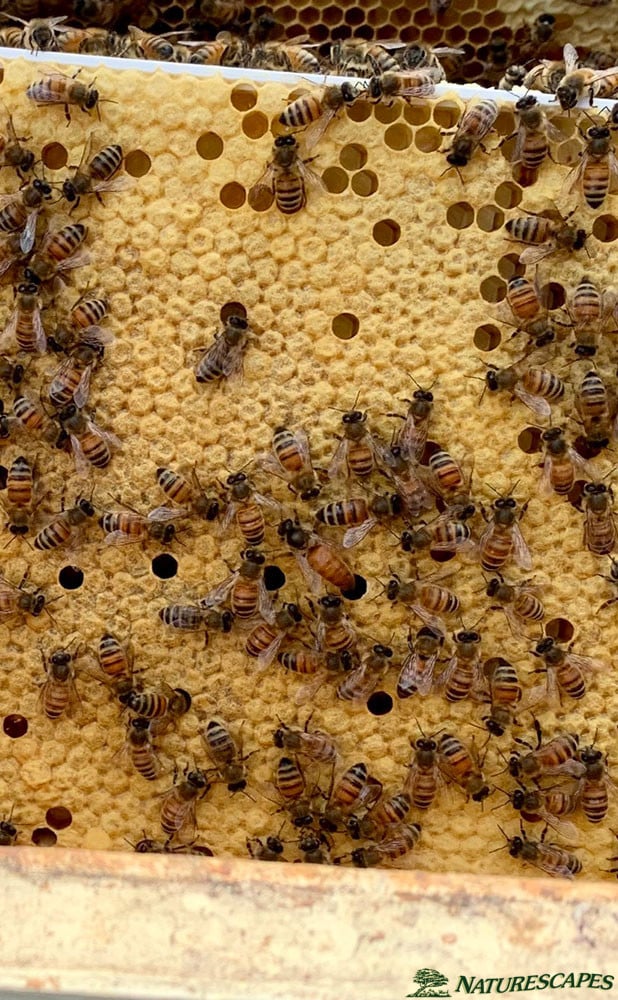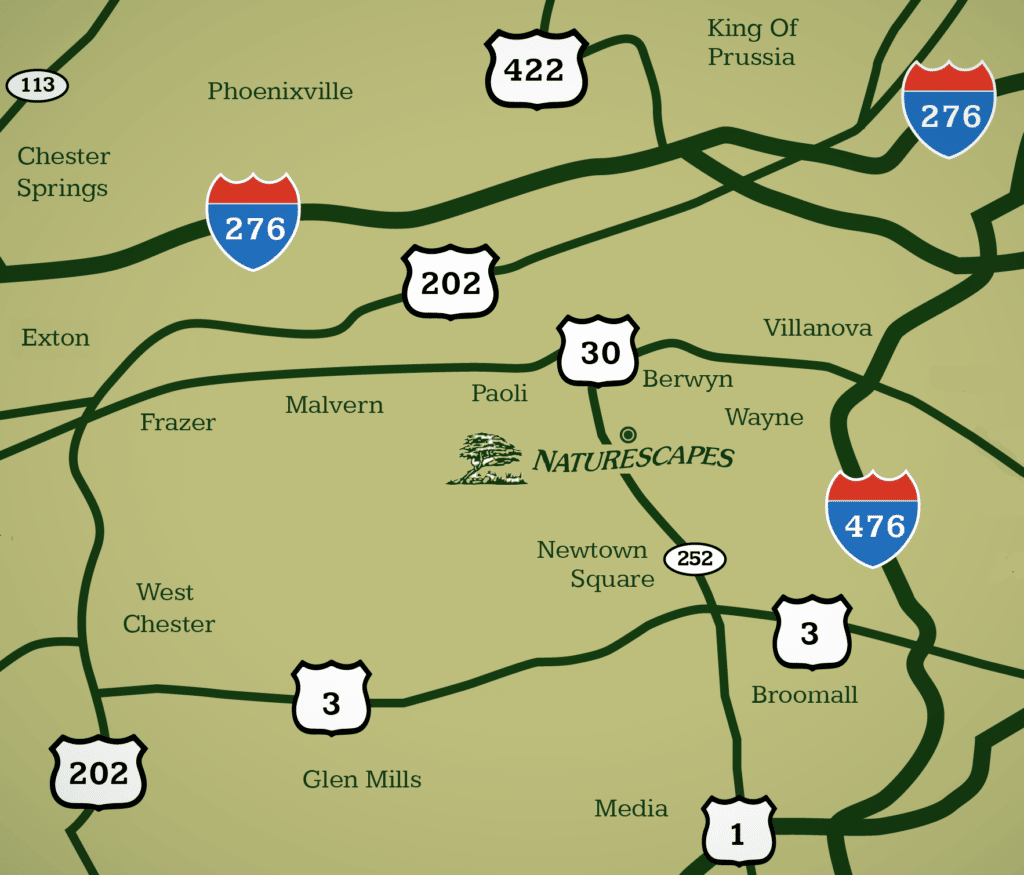Thank you to Chris Ness, Backyard Beekeeper and Chester County Beekeepers Association member, who contributed the blog post below.
Honey Bees in Every Season
Spring
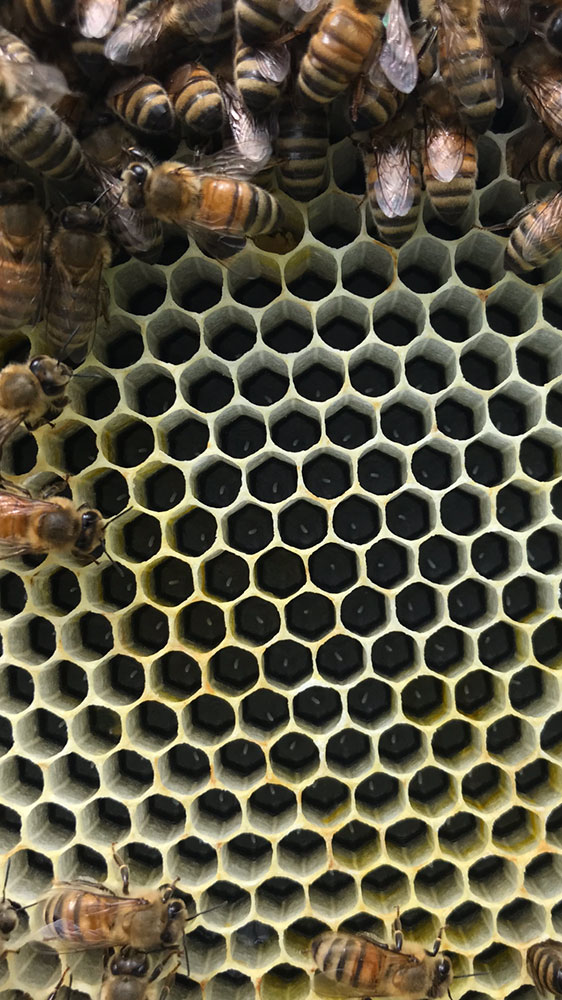
Freshly Laid Honey Bee Eggs
As temperatures start hitting 50 degrees, honey bees are eager to get to work. The lone queen bee ramps up egg laying in hexagonal wax honeycomb cells built on frames. The egg laying process continues from spring through fall. A new egg emerges as a bee every 21 days. The welcoming of spring is also the time overwintered bees begin foraging for nectar and pollen. Dandelions are most often the first food source available to the bees, providing both nectar (carbohydrates) and pollen (protein). In Pennsylvania, bees need a minimum of 60lbs of honey to survive winter and spring is the season where bees can produce more food than they consume to replenish depleted winter stores.
Summer
As spring turns to summer, the nectar flow starts to dwindle where food sources are at a minimum. Roughly mid-July, referred to as the dearth period, is when plants turn from flower to setting fruits and vegetables, or the seed spreading stage. During this period bees are still out actively foraging; however, the limited availability of flowers means the bees are flying farther to produce less. A hard-working spring & summer bee has an average life span of 4 weeks as the morning to night flying breaks down their wings and bodies.
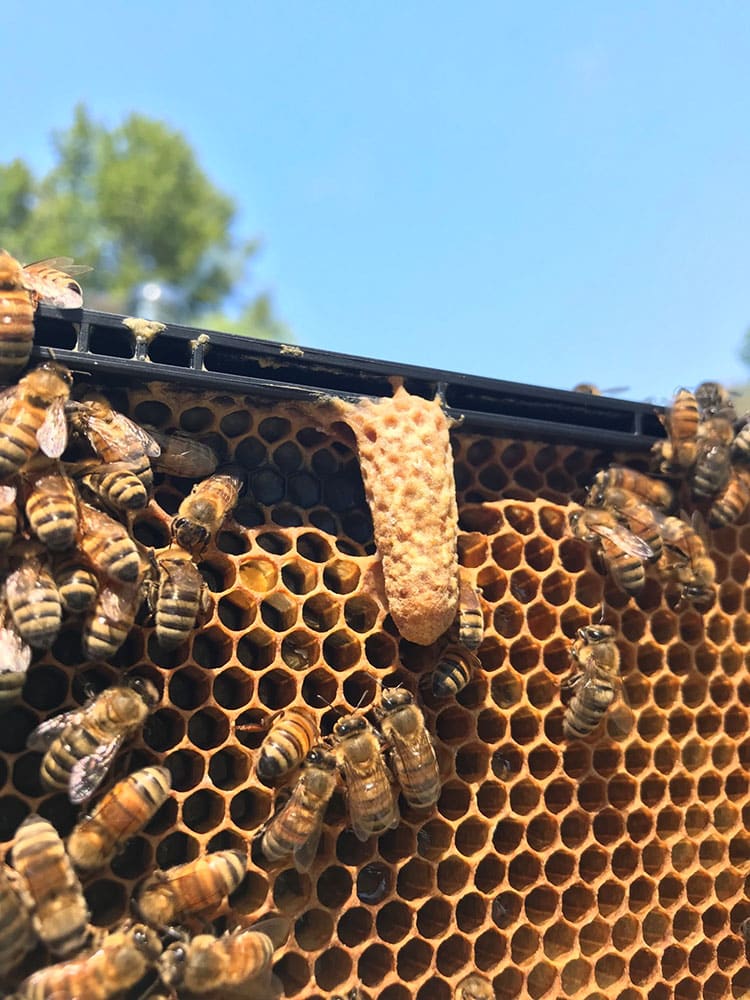
Peanut shape New Queen Bee yet to emerge
Fall
As temperatures start to fall and precipitation returns, fall blooms provide one last opportunity for bees to build up food stores for the winter. This is also the time the honey bees winterize the hive and take inventory while the queen starts ramping down egg production.
Winter
Through winter honey bees will cluster in a ball around the queen; “shivering” to produce heat as they move in an orb around the hive to consume the food. At any point the temperatures break 50 degrees, the bees will break huddle to take cleansing flights and take in some fresh air.
Beekeeping for Honey
Understanding bees need a minimum of 60 lbs. to survive winter, beekeepers will monitor honey production of their hives, taking excess for the benefit of human consumption. For hives in need of food, Beekeepers often supplement feeding with sugar water, candy boards (moistened and packed sugar) and fondant. Any honey frames on the hive when supplemental feeding is occurring can no longer be considered pure honey. For this reason, beekeepers will not supplement feed when they are looking to produce honey for humans.
- Worker Bee brings in Orange Pollen on sacks on rear legs
- Bees clean up honey after hive inspection
- Bees hard work, wax capped (to keep clean) full frame of honey
- Wax capped honey (top left)- Bee pollen (middle) – Capped brood [baby bees] (bottom right)
Swarms
So you’ve seen a giant cloud of bees that eventually lands in a cluster on a branch or structure! Swarming is a honey bee’s natural means to reproduce and typically happens late May through June in Pennsylvania. The weather is good and the food is plentiful, meaning this is the best time to split the colony to better the odds of survival of the species through winter. During swarm season, through an inherently biologically process, a colony will produce new queen bees, as they communicate in the hive to decide roughly which half of the colony will leave with the old queen to find a new home.
In beekeeping, swarming means lost bees which translates to lost honey production. For this reason, beekeepers implement various strategies in an attempt to mitigate swarms. These mitigation attempts are not always successful. In the event you come across a swarm on your property it is encouraged to seek out your local beekeeper’s club who often have members willing to come collect the bees. Unprovoked swarms are generally harmless and will not attack. They are sluggish as they are engorged with honey and more concerned with finding a new place to live.
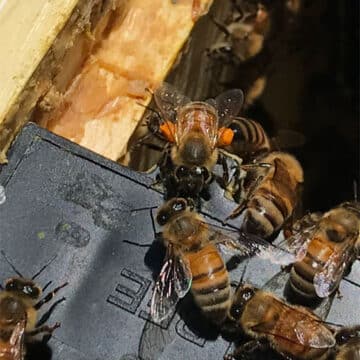
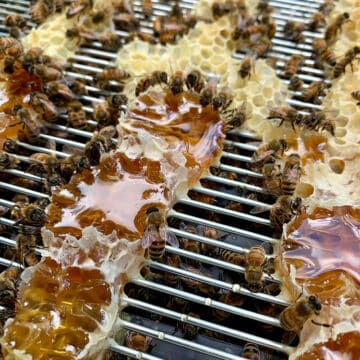
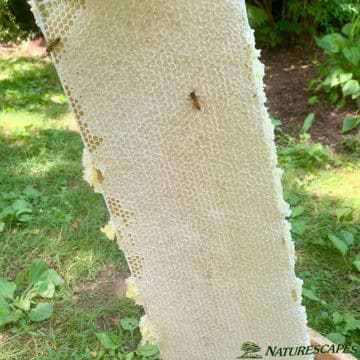
![Wax capped honey (top left)- Bee pollen (middle) - Capped brood [baby bees] (bottom right)](https://www.naturescapes-pa.com/wp-content/uploads/2021/08/Top-Left-wax-capped-honey-Middle-Bee-Pollen-Bottom-Right-capped-Brood-baby-bees-1-360x360.jpg)
